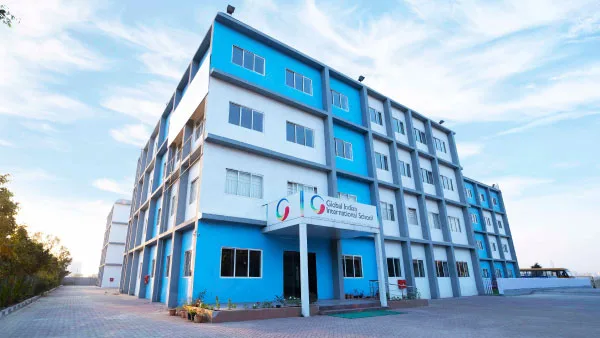In the ever-evolving landscape of education, where traditional boundaries are continuously being redrawn, a new era has dawned upon us. An era where geographical distances blur, languages intermingle, and cultures converge in the hallowed halls of International schools.
But what is it that propels these institutions beyond the confines of conventional learning?
The answer, undeniably, lies in the seamless integration of technology.
As we embark on a riveting expedition to unearth the intricate interplay between technology and International schools, we find ourselves at the crossroads of innovation and pedagogy, where tablets and textbooks, virtuality and reality, amalgamate in unprecedented ways.
Let’s decode the profound role of technology in shaping the destinies of tomorrow’s global citizens.
Technology in Education: An Overview
In an era defined by rapid technological advancement, the hallowed halls of education have not remained untouched by the transformative power of innovation. The fusion of technology and education has ignited a paradigm shift, transcending traditional pedagogical boundaries and heralding a new era of interactive, personalized, and engaging learning experiences.
This dynamic synergy has birthed a plethora of tools, platforms, and methodologies that are reshaping classrooms into vibrant hubs of exploration.
From virtual reality teleporting students to historical epochs, to artificial intelligence fine-tuning personalized learning pathways, and from collaborative cloud-based projects transcending geographical borders, to gamified lessons that make every concept an adventure – the spectrum of possibilities is as vast as it is awe-inspiring.
Yet, as we delve into this digital educational tapestry, questions abound.
● How does technology truly impact learning outcomes?
● Can it bridge the educational divide or inadvertently widen it?
● What role does the human touch play in this digital renaissance?
● How do educators seamlessly integrate tech into their teaching arsenal?
From Kindergartens to Universities, from bustling classrooms to the realm of remote learning, the layers of technology in education are dissecting its promises, perils, and potential.
You will learn everything in this article, one byte at a time.
Advantages of Technology Integration in Education
With the infusion of technology into education, a symphony of advantages unfurls, illuminating the path toward an enriched and empowered educational realm.
1. Personalized Learning Odyssey: Technology’s prowess lies in its ability to tailor learning experiences to the individual. Adaptive learning algorithms analyze a student’s progress and adapt content to match their pace and comprehension level. This tailored approach not only addresses the diverse needs of students but also fosters a sense of ownership over their learning journey.
2. Globalized Perspectives: Through technology, the walls of the classroom dissolve, connecting students with peers and experts worldwide. Virtual exchanges, collaborative projects, and video conferencing bridge geographical divides, nurturing a deeper understanding of diverse cultures and viewpoints, thus nurturing global citizens poised for an interconnected world.
3. Multisensory Engagement: Traditional textbooks, though steadfast companions, often fall short in captivating young minds. Enter technology – with interactive simulations, 3D models, and multimedia resources that engage multiple senses. This multisensory experience doesn’t just enhance comprehension but transforms learning into an immersive adventure.
4. Lifelong Learning Empowerment: The digital realm is a treasure trove of knowledge, with information at one’s fingertips. Integrating technology equips students with vital digital literacy skills, enabling them to navigate the ever-evolving landscape of information, fostering curiosity and self-directed learning long after formal education.
5. Real-world Relevance: Bridging theory and practice becomes seamless with technology. Virtual labs, augmented reality field trips, and simulations enable students to apply concepts to real-world scenarios, transcending textbooks to embrace the practical essence of education.
6. Inclusive Education Spectrum:Technology empowers inclusivity by providing tools for students with diverse learning styles and abilities. Accessibility features, assistive technologies, and customizable interfaces provided by cbse school in noida ensure that no learner is left behind, creating an environment where all can thrive.
7. Empowering Educators:Teachers evolve into facilitators of knowledge, orchestrating immersive learning experiences. Technology streamlines administrative tasks, offers real-time insights into student progress, and provides a hub for resource sharing and professional development, rejuvenating the teaching profession.
8. Environmental Stewardship: E-books replace paper, virtual classrooms negate commuting, and online submissions reduce physical waste. This harmonious integration of technology and eco-consciousness cultivates environmentally responsible citizens.
9. Unleashing Creativity: Digital technology tools amplify creativity, enabling students to express themselves through multimedia projects, digital storytelling, coding, and more. This unleashes a canvas of boundless imagination, where every student becomes an artist of innovation.
10. Future-ready Skill Forging:In a world where technological prowess is paramount, integrating technology equips students with skills crucial for the future. Coding, data analysis, critical thinking – these proficiencies become the stepping stones to professional success.
As we stand at this crossroads of education and innovation, the integration of technology stands as a beacon of possibilities. The advantages it bestows upon the educational landscape are not mere augmentations, but rather transformative catalysts, enriching every facet of learning and shaping future generations poised to embrace the challenges and triumphs of tomorrow.
Enhancing Teaching and Learning through Technology
In International schools, the role of technology has transcended conventional boundaries to craft an educational experience that is as dynamic as it is transformative. The integration of technology into teaching and learning has ushered in a new era, one where classrooms are no longer confined to four walls, and education extends beyond the confines of textbooks. It has become a dynamic catalyst that amplifies the entire teaching and learning experience, redefining how knowledge is imparted, absorbed, and internalized.
Let’s understand how it has revamped whole education and helped educators.
1. Personalized Pedagogical Odyssey: At the heart of this digital transformation lies the concept of personalized learning. With technology as a guiding torchbearer, educators embark on a journey to tailor educational experiences to the individual needs and learning styles of each student. Adaptive learning platforms analyze student progress and adapt content delivery, ensuring that no learner is left behind or held back. This ensures that students are not passive recipients of information but active participants in their educational voyage.
2. Rich and Diverse Learning Resources: The digital realm is a treasure trove of resources, from e-books and online databases to educational videos and multimedia presentations. Educators can curate a wealth of materials that cater to various learning modalities, which makes it easy for them to explain the topics to students from different angles. It also helps students to gain a more comprehensive understanding.
3. Interactive Engagement Redefined: Gone are the days when lectures dictated the rhythm of the classroom. With technology’s vibrant palette, educators paint a landscape of interactive sessions. Multimedia presentations, virtual simulations, and gamified lessons infuse vitality into subjects, capturing students’ attention and making complex concepts tangible. This makes the classroom alive with curiosity, where learning becomes an immersive adventure rather than a monotonous routine.
4. Global Classroom Dynamics: Use of technology in education has effectively dissolved the borders of the traditional classroom, connecting students with peers and teachers with experts from around the world. Virtual exchanges, video conferences, and collaborative projects knit together a global tapestry of learning. This exposure enriches academic learning and teaching.
5. Data-Driven Insights: The digital age bestows a treasure trove of data, and International schools are harnessing this resource to illuminate the path of effective teaching and during cbse school admission. Data-driven insights aid schools in streamlining admissions by analyzing applicant demographics, academic performance, and preferences, facilitating informed decisions for optimal class composition and tailored communication to prospective students.
Learning management systems and analytical tools offer real-time insights into student progress, allowing educators to tailor their instructional strategies. This data-driven approach enables timely interventions, identifies learning gaps, and empowers educators to provide targeted support where needed, ultimately enhancing the learning experience for every student.
6. Teacher as Facilitator of Knowledge: In this tech-enhanced landscape, educators evolve into orchestrators of knowledge rather than mere dispensers of information. The flipped classroom model, for instance, empowers students to explore content at their own pace outside of class, while precious classroom time is dedicated to collaborative activities, discussions, and problem-solving. The teacher’s role shifts to guiding and mentoring.
7. Multidimensional Assessment Frameworks: Future tech education has breathed new life into the way learning is assessed. Traditional paper-and-pencil exams are now complemented by diverse assessment methods – multimedia projects, e-portfolios, online quizzes, and peer evaluations. This multifaceted approach not only aligns with real-world demands but also provides a more comprehensive view of a student’s abilities, reflecting the true spectrum of their learning journey. This also helps educators to gauge their teaching styles and improvise it.
8. Timely and Actionable Feedback: Technology enables educators to provide timely feedback, fostering a continuous learning loop. Online quizzes, assessment tools, and learning management systems allow teachers to monitor student progress in real time and tailor interventions to address specific needs. This feedback loop facilitates incremental improvement and a growth mindset.
9. Professional Development and Pedagogical Growth: Educators benefit from technology through professional development opportunities and resource sharing. Online courses, webinars, and virtual workshops enable teachers to continuously enhance their teaching methodologies and stay updated with the latest educational trends, ultimately enhancing the overall quality of instruction.
The synergy between technology and education isn’t just about embracing innovation; it’s about forging a path toward educational excellence that nurtures the thinkers, creators, and leaders of tomorrow.
The Crucial Roles of Technology in Education
Here are nine roles of technology in education that fulfills in education.
1. Digital Learning Platforms: Technology has ushered in a new era of digital learning platforms, enabling students to access educational resources, interactive lessons, and assessments online. These platforms cater to diverse learning styles, making education more inclusive and adaptable.
2. Personalized Learning: With the help of advanced algorithms and analytics, technology facilitates personalized learning pathways. It assesses individual student strengths and weaknesses, tailoring lessons and assignments to address specific needs, fostering a more effective and efficient learning process.
3. Global Connectivity: Through video conferencing and online collaboration tools, technology breaks down geographical barriers, allowing students and educators to connect with peers and experts from around the world. This global perspective enriches learning experiences and promotes cultural awareness.
4. Interactive Content: Interactive simulations, virtual reality, and augmented reality applications bring abstract concepts to life, making learning more engaging and comprehensible. Students can explore complex subjects in a visual and interactive manner, enhancing retention and understanding.
5. Real-World Skills Development: Technology facilitates the acquisition of essential skills for the digital age, such as digital literacy, coding, and data analysis. These skills prepare students for future careers and empower them to navigate an increasingly technology-driven world.
6. Instant Access to Information: The internet provides a vast repository of knowledge that is readily accessible to students. Technology equips them with the skills to critically evaluate and use online resources, encouraging independent research and self-directed learning.
7. Efficient Assessment and Feedback: Automated assessment tools streamline the process of grading and providing feedback on assignments and tests. This efficiency allows educators to focus on in-depth analysis and one-on-one support, fostering a more productive learning environment.
8. Inclusive Education: Technology enables tailored support for students with diverse learning needs. Assistive technologies, such as screen readers and speech recognition software, empower differently-abled students to participate fully in the educational journey.
9. Environmental Sustainability: Digital textbooks, online resources, and paperless classrooms contribute to reducing the environmental impact of education. Technology promotes sustainable practices, aligning education with broader efforts toward a greener future.
With the integration of technology in education, it has redefined the way we learn and teach. As technology continues to evolve, its potential to shape the future of education remains boundless
Challenges in Educational Technology
1. Digital Divide: Disparities in access to technology and the internet create an unequal learning environment. Students from underserved communities may lack the necessary devices and connectivity, hindering their ability to fully participate in digital learning.
2. Quality of Online Content: Ensuring the quality and accuracy of online educational resources can be a challenge. Not all digital content is peer-reviewed or up-to-date, leading to potential misinformation and confusion among learners.
3. Teacher Training: Educators need proper training to effectively integrate technology into their teaching methods. Lack of training can result in inefficient use of technology or missed opportunities for innovative teaching.
4. Data Privacy and Security: Storing and managing student data in digital systems raise concerns about privacy and security. Safeguarding sensitive information and complying with data protection regulations is crucial but can be complex.
5. Technological Infrastructure: Outdated or inadequate technological infrastructure in schools can impede the smooth implementation of educational technology. Slow internet, outdated devices, and lack of technical support can hinder the learning experience.
6. Digital Fatigue: Excessive screen time and constant use of digital devices can lead to digital fatigue and reduced engagement. Striking a balance between digital and traditional learning methods is essential.
7. Pedagogical Shift: Integrating technology requires a shift in teaching pedagogy. Some educators may struggle to adapt their instructional methods to effectively leverage digital tools for meaningful learning experiences.
8. Accessibility and Inclusivity: Ensuring that digital content and platforms are accessible to students with disabilities is a challenge. Designing for inclusivity can sometimes be overlooked, limiting the learning opportunities for these students.
9. Cost Implications: Investing in educational technology, including devices, software, and maintenance, can be costly for educational institutions. Budget constraints may hinder the adoption of innovative technological solutions.
10. Loss of Human Connection: Overreliance on technology could lead to a reduced sense of human connection and interaction in the classroom. Building relationships and fostering a supportive learning environment may become more challenging.
11. Constant Technological Change: The rapid evolution of technology requires educational institutions to continuously update and adapt their systems. Keeping up with these changes can be resource-intensive and demanding.
12. Digital Literacy: Both students and educators need to develop digital literacy skills to navigate and effectively use technology for learning. The lack of these skills can limit the potential benefits of educational technology.
13. Ethical Considerations: Incorporating technology raises ethical questions, such as the use of AI in assessments or data-driven decision-making. Striking the right balance between technological advancement and ethical implications is essential.
14. Screen Time Management: Balancing screen time for educational purposes with other important activities, such as physical exercise and face-to-face interactions, is a concern for both educators and parents.
Addressing these challenges requires a holistic approach that involves collaboration among educators, policymakers, technology developers, and stakeholders. By finding solutions to these hurdles, educational learning technology can truly fulfill its potential to enhance and transform the learning experience.
Future Trends in Technology and Education
1. Adaptive Learning: Technology will personalize learning experiences, adjusting content and pace based on individual student abilities and preferences, enhancing engagement and mastery.
2. Immersive Learning: Virtual and augmented reality will immerse students in realistic and interactive educational environments, making complex subjects tangible and fostering deeper understanding.
3. AI-Powered Assessments: Artificial Intelligence in education will enable sophisticated assessments that analyze not only answers but also the problem-solving process, providing richer insights into students’ cognitive development.
4. Lifelong Learning Platforms: Continuous learning will be facilitated by platforms offering micro-courses, upskilling opportunities, and digital badges, catering to evolving career demands.
5. Data-Driven Insights: Learning analytics will provide educators real-time data on student performance, enabling timely interventions and personalized support strategies.
6. Robotics in Education: Robots will assist in classrooms, automating routine tasks, and offering individualized guidance, transforming the student-teacher dynamic.
7. Blockchain Credentials: Secure and verifiable digital credentials will gain prominence, revolutionizing the way we validate educational achievements and professional certifications.
8. Collaborative Learning Tools: Advanced collaboration platforms will enable global interactions, connecting students and experts worldwide for diverse perspectives and cross-cultural learning.
9. Ethical Tech Integration: Focus on responsible technology use will emphasize digital well-being, online etiquette, and ethical considerations, shaping responsible digital citizens.
10. Gamification and Edutainment: Game elements and interactive content will infuse fun and engagement into learning, making education more enjoyable and effective.
11. Neuroscience-Backed Learning: Insights from neuroscience will inform instructional design, optimizing learning methods that align with how the brain processes and retains information.
12. Green Tech in Education: Sustainable practices will be integrated, utilizing eco-friendly technologies, renewable energy sources, and reducing the carbon footprint of educational institutions.
13. Language Translation Tools: Real-time language translation tools will break down language barriers, enabling global collaboration and knowledge exchange.
14. Biometric Authentication: Secure and seamless access to educational resources will be facilitated by biometric authentication, enhancing data security and user experience.
15. Voice-Enabled Assistants: AI-driven voice assistants will support learners in real-time, answering questions, providing explanations, and guiding them through complex topics.
Read More: Importance Of Digital Library For Students
Conclusion
As we reflect on the remarkable journey through the role of technology in International schools, it becomes evident that we stand at the cusp of an educational revolution. The convergence of technology and education has ignited a spark that transcends borders, cultures, and traditional limitations, propelling us into a future brimming with possibilities.
Yet, this voyage demands more than just technological prowess; it calls for a shared commitment to responsible and ethical integration. Just as explorers of old had to harmonize with foreign landscapes, our embrace of technology must be grounded in mindfulness, empathy, and digital citizenship.
FAQs
What is the role of technology in school education?
The role of technology in school education is multifaceted, enhancing engagement, personalizing learning, and expanding access to resources.
What is the role of technology in the classroom?
In the classroom, technology facilitates interactive learning, supports diverse teaching methods, and prepares students for a digitally-driven world.
What are the 3 roles of technology for teaching and learning?
Technology serves three key roles in teaching and learning: personalized instruction, global connectivity, and data-driven insights.
How has technology changed the education system?
Technology has revolutionized education by fostering online learning, enabling remote collaboration, and offering diverse educational resources.
What is a major advantage of using technology to teach?
A major advantage of using technology to teach is its ability to cater to different learning styles and paces, promoting individualized growth.
How technology is changing the future of education?
Technology is reshaping the future of education by introducing adaptive learning, virtual experiences, and lifelong learning opportunities.





































